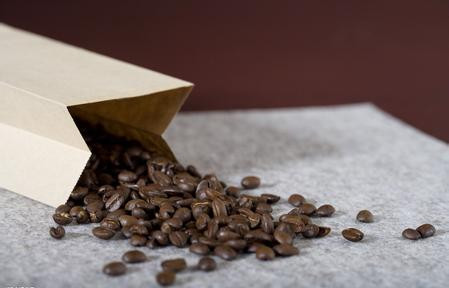Coffee common sense the "focus" of a cup of coffee is roasting.

The components of coffee quality (such as the quality and range of acidity and bitterness of coffee, the intensity and quality of aroma) are determined at the raw bean stage, although roasting can only adjust the taste within the range of characteristics of raw beans, but roasting has a greater impact on the taste of coffee than grinding and extraction, grinding and extraction is to transfer the roasted active ingredients to the coffee liquid, which has nothing to do with creating flavor.
During the roasting process, coffee bean cells mutate and carbohydrates, amino acids, proteins, lipids and minerals react. At 185240 ℃, sugars combine with amino acids, vitamin C and proteins for caramelization, which is the so-called "Mena reaction". The final product is yellowish brown, bitter sweet glycosylamine and melanin-like pigments. Thus giving more aroma to the coffee and ripe beans. The aroma of raw coffee beans contains about 250 different volatile molecules, while after roasting, as many as 800 volatile molecules can be found in coffee beans. Therefore, roasting is the most important link in coffee processing.
Important Notice :
前街咖啡 FrontStreet Coffee has moved to new addredd:
FrontStreet Coffee Address: 315,Donghua East Road,GuangZhou
Tel:020 38364473
- Prev

Cappuccino cappuccino production process
Cappuccino has become a popular drink all over the world. To make a perfect cappuccino, the key lies in the quality of the milk foam, especially the choice of fresh milk. At present, a lot of milk on the domestic market is made of milk powder mixed with water. (the industry is called reduced milk. Because the national standard of Chinese fresh milk is measured by the content of solidified matter in milk, so this reduction.
- Next

How many levels of baristas qualification certificate should be tested? SCA Coffee Certification Test what is the amount of money?
The qualification of baristas is divided into three levels: junior baristas (level 3), intermediate baristas (level 2) and senior baristas (level 1). The scope of the implementation of professional qualification certificate personnel: 1, professional service personnel who specialize in coffee making and grinding 2, Zhen who specializes in coffee
Related
- Beginners will see the "Coffee pull flower" guide!
- What is the difference between ice blog purified milk and ordinary milk coffee?
- Why is the Philippines the largest producer of crops in Liberia?
- For coffee extraction, should the fine powder be retained?
- How does extracted espresso fill pressed powder? How much strength does it take to press the powder?
- How to make jasmine cold extract coffee? Is the jasmine + latte good?
- Will this little toy really make the coffee taste better? How does Lily Drip affect coffee extraction?
- Will the action of slapping the filter cup also affect coffee extraction?
- What's the difference between powder-to-water ratio and powder-to-liquid ratio?
- What is the Ethiopian local species? What does it have to do with Heirloom native species?

